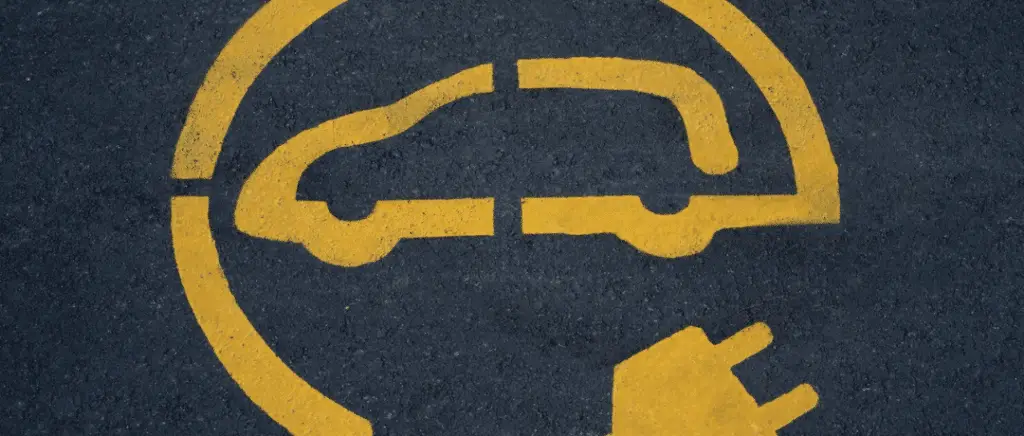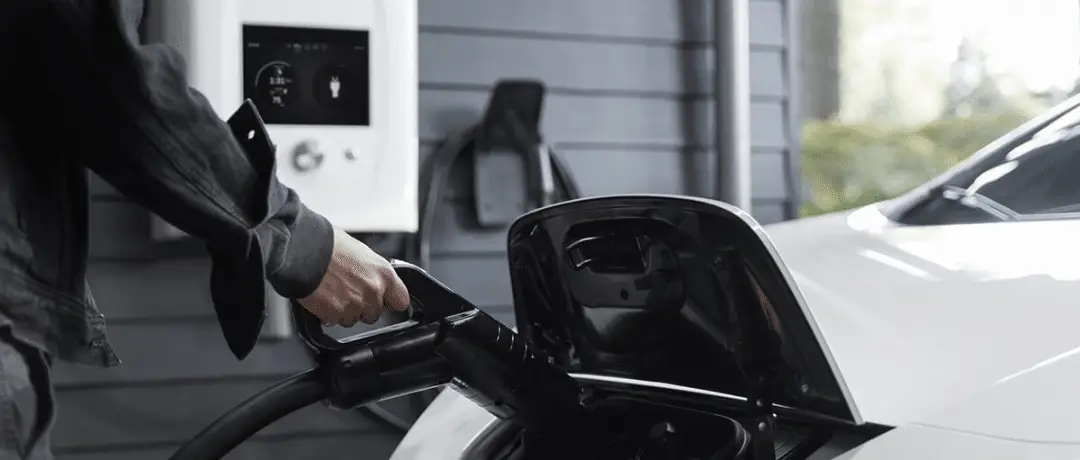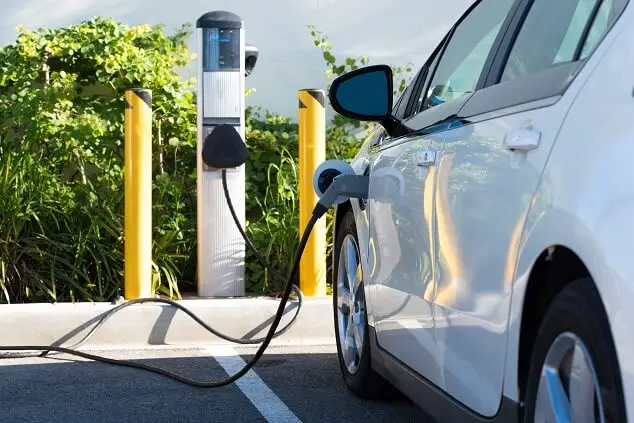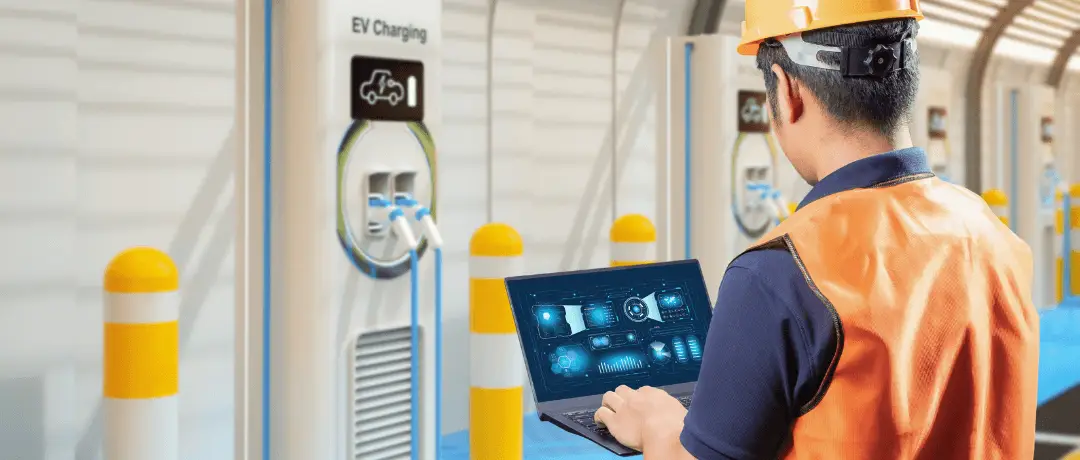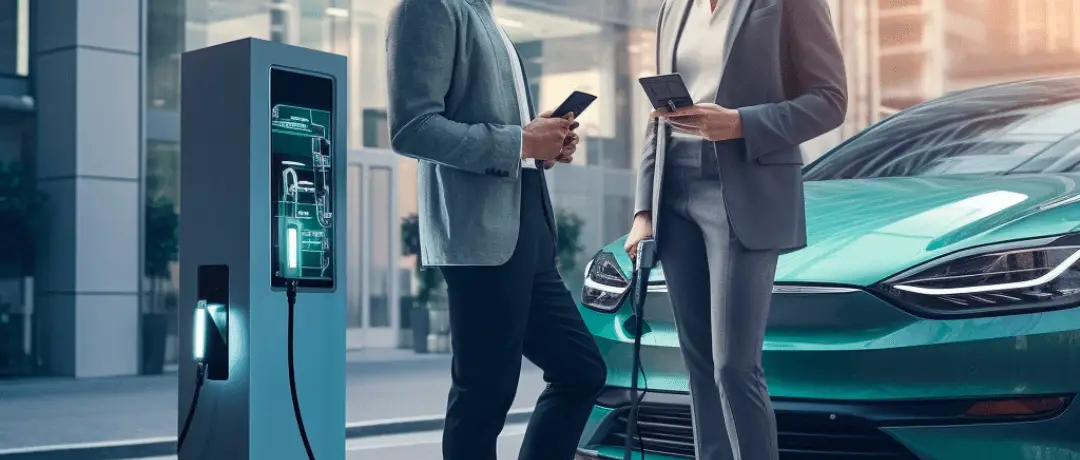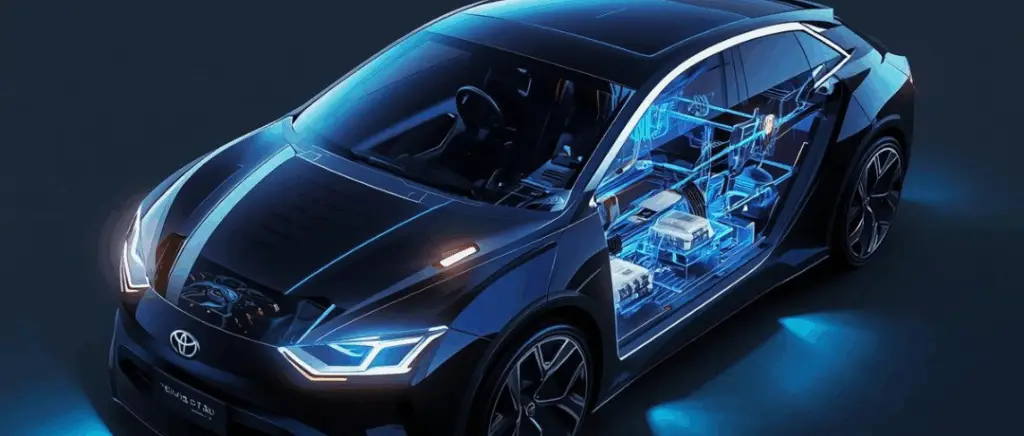Monday to Friday
9am - 12.30pm - 2pm - 7pm
Installing a home charging point: key steps and practical advice
Installing a home charging point for your electric vehicle may seem complex, but by following these essential steps, you'll ensure an efficient, safe and compliant installation.
1. Check your eligibility and technical requirements
Before installing a charging point, check the capacity of your domestic electricity network. Bollards often require an upgrade to the installation, especially if you want a bollard with a power rating of more than 3.7 kW. Also, choose a safe and convenient location to install the charging point, preferably near your parking space or in your garage.
2. Choose the right power for your needs
Home terminals vary between 3.7 kW, 7.4 kW, 11 kW and 22 kW. For optimum charging overnight, a 7.4 kW charging point is often recommended, enabling a vehicle to be fully charged in 7 to 8 hours.
3. Call on an IRVE-qualified professional
Any recharging point of more than 3.7 kW must be installed by an IRVE-certified electrician. This guarantees compliance with electrical standards and the safety of the installation. It usually takes between 1 and 2 days to complete the installation (network check, installation of the terminal, safety tests).
4. Available funding and grants
Individuals can benefit from a tax credit of up to €300, covering 75 % of the cost of installation. This aid is available regardless of income, for both primary and secondary residences. If you live in a condominium, you can benefit from a grant covering up to 50 % of the cost of the installation, capped at €960).
Our advice
- Recharge during off-peak hours to reduce energy costs.
- Plan for future installation if you plan to acquire several electric vehicles.
If you'd like to find out more about each stage and benefit from more detailed advice, we urge you to read the full article on installing home charging points. There you'll find all the practical and technical information you need to make your project a success.
Read our article about :
Which charging point should I choose? Making the right choice
The choice of terminal depends not only on your needs, but also on your environment and your electric vehicle.
The type of recharging point
When choosing a charging point for an electric vehicle, you need to consider not just power, but also other crucial criteria. Charging points vary according to their different uses. As well as power, it's essential to pay attention to smart features, such as connectivity for remote management via a mobile application, optimising electricity consumption in real time. Safety is also paramount, with terminals offering protection against power surges and overheating. Finally, dynamic load management systems enable energy to be distributed efficiently to avoid overloading the electrical installation, which is ideal for households or businesses with several electric vehicles.
Where to install the charging point
The location of the charging point plays a key role in the efficiency and safety of the installation. As well as proximity to the parking space, it's important to consider the quality of the ground and ventilation. Installing a charging point in a well-ventilated space helps dissipate the heat generated during charging, especially if you opt for more powerful charging points. It's also a good idea to provide shelter, or to install the charging point under a covered structure, to extend the equipment's lifespan in bad weather.
In addition to the electrical capacity of your home, it may be a good idea to install an energy management system that distributes electricity between the charging point and other appliances in the home. This avoids peaks in consumption and the risk of overloading, particularly in households with several electric vehicles or other energy-guzzling equipment. This type of management can also include off-peak charging, optimising energy costs.
Lastly, the compatibility of charging points with bidirectional charging systems (V2G) is an increasingly relevant aspect for those who want to use their vehicle as a "mobile home". battery This is an ideal solution for businesses and homes equipped with solar panels, maximising self-consumption and reducing dependence on the grid. This represents an ideal solution for businesses and homes equipped with solar panels, maximising self-consumption and reducing dependence on electricity grids.
To find out more about the criteria for selecting the ideal charging point for your electric car, read the full article on this subject.
Read our article about :
Finding a certified installer for a charging point: our recommendations
Before any installation, an audit of your electrical installation is necessary to ensure that it can withstand the power required by the charging point. An IRVE-certified professional will carry out this diagnosis to guarantee safety and compliance with current standards. Using a certified IRVE installer is essential if you are to benefit from the guarantees and subsidies available. Since 2017, it has been compulsory to use a qualified electrician for any installation of a charging point exceeding 3.7 kW. They are trained to advise you on the best location, charging options and safety measures for your situation. Depending on the complexity of the installation (taking into account the network, the power required and any modifications), you should generally allow between 4 and 6 hours for a standard installation. For more complex installations, involving work on the infrastructure, this timeframe may be longer.
Our advice
- Make sure that the terminal installed is fitted with protective devices, such as circuit breakers and earth leakage devices,
- Check your bollard regularly to make sure it is working properly. Regular maintenance will prolong its life.
If you'd like to go further in your understanding of the criteria for selecting a qualified installer, as well as the technical details of the installation, we urge you to read the full article. It will provide you with all the practical information you need to make the right choice.
Read our article about :
Installing recharging points on company premises: standards and certifications to be aware of
L'installation of recharging stations is a strategic project that requires a number of standards to be met and a rigorous process to be followed. Since the entry into force of the LOM law In 2019, all businesses will have to meet specific obligations, particularly for new buildings or major renovations. This legislation imposes a minimum percentage of pre-equipped charging points for car parks.
In terms of regulations, the installation must comply with the NFC 15-100 standardThis standard guarantees the safety of electrical installations and optimises charging performance. This standard guarantees the safety of electrical installations and optimises charging performance. Installations must be carried out by IRVE-certified professionals to ensure compliance..
Companies must also allow sufficient time for installation. Depending on the complexity of the infrastructure, you should allow between 3 and 6 months for planning and work, particularly if structural or electrical adjustments are required. On average, a complete installation for several chargepoints can cost between €10,000 and €15,000, depending on the number of chargepoints and the specific features of the car park.
Companies can benefit from a number of grants, including the ADVENIR bonuswhich can cover up to 50 % of the installation costs, with ceilings ranging from €960 to €9,000, depending on the power of the terminal.
This aid considerably reduces the initial investment.
The main steps for a successful installation include :
- auditing the site, assessing energy requirements, car park configuration and electrical capacity.
- choice of terminal, selecting terminals suited to their use and the number of users.
Once these stages have been completed, installation is carried out by IRVE experts, with rigorous tests to ensure that the equipment is working properly and safely.
By following good practice and complying with the standards, businesses can not only meet their legal obligations, but also improve their brand image while benefiting from financial aid. For more details on the steps, standards and grants available, please consult the full article.
Read our article about :
The best providers of recharging solutions: who are the leaders?
With the explosion in the number of electric vehicles, the choice of service provider for the installation of charging points is becoming essential, for both private individuals and businesses. Service providers stand out for the quality of their services, their expertise and their compliance with the standards in force, such as IRVE certification, which is required for any installation of charging points of more than 3.7 kW. decree no. 2017-26 on 12 January 2017. There are several including:
- Beev
- IZI by EDF
- TotalEnergies
- Hager
- Tesla
| Services proposés | Puissance des bornes | Points forts | |
|---|---|---|---|
Beev | Tailor-made solutions, installation and maintenance | 3.7 kW to 22 kW | Full service from A to Z |
IZI by EDF | Turnkey terminals for homes and businesses | 7.4 kW to 22 kW | Personalised support, grants available |
TotalEnergies | A wide range of solutions for individuals and businesses | 7.4 kW to 22 kW | Wide national coverage, fast installation |
Hager | Witty Start docking station for private users | 2.3 kW to 22 kW | Advanced protection and compact design |
Tesla | Wall Connector Gen 3, with remote management | 7.4 kW | WiFi connectivity, supervision via application |
The choice of service provider for the installation of charging stations can make all the difference in terms of safety, speed of charging and ease of use. By turning to IRVE-certified companies, you can be sure of getting a service that complies with standards, with a range of options tailored to your needs. To find out more about the specific features of the different service providers, please read the full article.
Read our article about :
Choosing the right recharging point for your business: our advice
When a company is considering installing charging stations for its employees or customers, there are a number of factors that need to be taken into account to make the best choice. In 2024, businesses not only need to ensure that the installation complies with regulatory standards, but also to optimise costs and maximise the benefits for their entire ecosystem.
Power tailored to business needs
Charging stations for businesses are often more powerful than those for private users. The majority of charging points installed in businesses have a power rating of between 11 kW and 22 kW, because they allow faster recharging, suitable for frequent and varied use. A 22 kW charging point can recharge a car in just 1 to 2 hours, which is essential for company fleets or visitors with short charging times. However, installing such a charging point requires a three-phase infrastructure and a prior check of the company's electrical capacity.
Compliance and IRVE-certified installation
Under current regulations, any installation of charging stations with a power rating of more than 3.7 kW must be carried out by an IRVE-certified electrician. This certification guarantees that the installation complies with safety standards, in particular the NFC 15-100 standardThis allows companies to benefit from specific subsidies, such as the ADVENIR premium. This premium can cover up to 50 % of the total cost of the installation, which represents an interesting opportunity to reduce the initial investment.
Strategic choice of terminals and subsidies
Businesses should also take into account the subsidies available, such as tax credits or specific subsidies for energy transition. By opting for intelligent charging stations that can manage and optimise energy consumption in line with current tariffs, businesses can significantly reduce their costs in the long term. What's more, by choosing connected charging stations, you can remotely manage the use of the stations and better distribute recharging sessions according to actual needs.
For businesses, choosing the right charging point is a strategic decision that combines compliance, performance and cost optimisation. Thanks to the subsidies available and a compliant installation, you can maximise the benefits of this energy transition. To find out more about specific options for businesses and the financial benefits of installing charging points, read our full article on the subject.
Read our article about :
Conclusion
Choosing and installing a charging point is a key decision in facilitating the use of electric vehicles, whether at home or in the workplace. It's essential to take into account the power of the charging point, its compatibility with the vehicle and the recharging requirements, while ensuring that the installation complies with safety standards. By keeping abreast of the options available and taking advantage of financial assistance, you can optimise your installation for today and tomorrow, while contributing to the energy transition.
Are you planning to equip your company with suitable recharging stations? Beev is here to support you every step of the way. Contact us today for a personalised quote and find out how we can transform your business. recharging infrastructure.
If you would like to find out more about the tax credit for in-car charging points 2024For more information, see our article on this subject.
You want to order your Beev recharge card ?
Thanks to our card,recharge your electric car with ease at all the charging points available in Europe.
